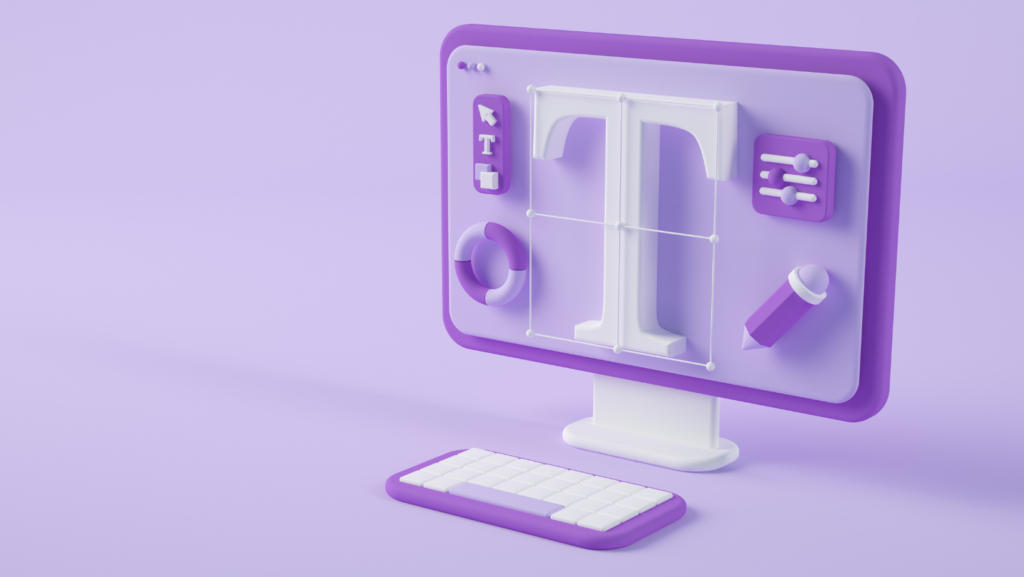In today’s digital landscape where attention spans are shorter than a goldfish’s memory successful products and services live or die by their user experience design. From the moment someone lands on a website or opens an app they’re forming split-second judgments that determine whether they’ll stick around or bounce faster than a cat chasing a laser pointer.
Digital user experience design isn’t just about making things look pretty – it’s the art and science of creating seamless interactions that keep users coming back for more. Think of it as the digital equivalent of a well-designed store layout where everything’s exactly where you’d expect it to be and checking out is a breeze. With over 4.9 billion internet users worldwide businesses can’t afford to ignore the power of thoughtful UX design in capturing and retaining their audience’s attention.
What Is Digital User Experience Design
Digital user experience design creates meaningful interactions between users and digital products through research-driven methodologies. It combines visual elements usability testing data analytics to optimize digital interfaces.
Core Principles of UX Design
Digital UX design relies on five fundamental principles that guide the creation of user-centered solutions:
- Accessibility: Digital interfaces accommodate users of varying abilities through inclusive design features color contrast screen reader compatibility.
- Usability: Interface elements follow established patterns users recognize intuitively navigation menus search functions contact forms.
- Consistency: Design elements maintain uniform appearance behavior across all touchpoints buttons icons typography colors.
- Information Architecture: Content organization creates logical pathways through clear hierarchies categorized menus structured layouts.
- Visual Hierarchy: Key elements grab attention through strategic placement size contrast whitespace relationships.
- Research Phase
- Gathering user data through surveys interviews analytics
- Analyzing competitor solutions market trends
- Creating user personas journey maps
- Design Phase
- Sketching wireframes low-fidelity prototypes
- Developing interactive high-fidelity mockups
- Establishing design systems style guides
- Testing Phase
- Conducting usability tests with target users
- Analyzing heatmaps user flows
- Implementing A/B testing scenarios
- Implementation Phase
- Collaborating with developers
- Creating responsive layouts
- Optimizing performance metrics
Key Elements of Digital User Experience
 Digital user experience encompasses multiple interconnected components that create meaningful interactions between users and digital products. Each element plays a distinct role in shaping the overall user journey.
Digital user experience encompasses multiple interconnected components that create meaningful interactions between users and digital products. Each element plays a distinct role in shaping the overall user journey.
Visual design elements form the foundation of user perception in digital interfaces. Color schemes influence emotional responses, with blue evoking trust in banking apps and warm tones creating urgency in e-commerce platforms. Typography impacts readability, as sans-serif fonts increase screen legibility by 24% compared to serif alternatives. White space distribution guides user attention to key interface elements while maintaining visual balance. Design systems incorporate consistent icon sets, button styles and imagery that align with brand identity guidelines to create cohesive experiences across digital touchpoints.
Information Architecture
Information architecture structures content to enhance findability and comprehension. Navigation systems employ breadcrumb trails to reduce user cognitive load by 89%. Content hierarchies organize information into primary, secondary and tertiary levels based on user priority data. Taxonomies create logical relationships between content categories, reducing search time by 47%. Site maps visualize content organization patterns while metadata systems enable effective content filtering. Card sorting sessions with users help validate information groupings and labeling conventions.
Interaction Design
Interaction design patterns determine how users engage with digital interfaces. Micro-interactions like button animations provide immediate feedback, increasing user confidence by 38%. Gesture controls on mobile devices follow established patterns – swipe right to advance, pinch to zoom. Form designs minimize friction by auto-formatting phone numbers and validating fields in real-time. Interactive elements maintain consistent behavior across device types while adapting to different input methods. Loading states keep users informed of system progress through visual indicators.
User Research and Testing Methods
Digital user experience research employs systematic methods to gather insights about user behaviors preferences. These methods inform design decisions through empirical data collection analysis.
Usability Testing
Usability testing evaluates digital products through direct user interaction observation. Participants complete specific tasks while researchers record their actions behaviors emotions. Remote testing platforms enable data collection from diverse geographical locations using screen recording eye-tracking software. In-person lab testing provides detailed insights through facial expression analysis think-aloud protocols. A/B testing compares multiple design variations to identify optimal interface elements by measuring:
| Metric | Description | Impact |
|---|---|---|
| Task Success Rate | Percentage of users completing tasks | Measures efficiency |
| Time on Task | Duration to complete actions | Indicates ease of use |
| Error Rate | Frequency of user mistakes | Shows pain points |
| User Satisfaction | Post-test feedback scores | Reflects overall experience |
User Personas and Journey Mapping
User personas represent archetypal users based on research data demographic patterns. Each persona includes key characteristics goals frustrations technology preferences. Journey maps visualize user interactions across digital touchpoints highlighting:
- Awareness phase interactions through social media search engines
- Consideration stage behaviors including product research comparison
- Decision points examining checkout processes account creation
- Post-purchase experiences focusing on support documentation usage
Behavioral analytics tools track actual user paths through digital interfaces validating journey map assumptions. Heat maps reveal user attention patterns click behaviors scroll depths. Session recordings capture real-time interaction data identifying conversion barriers engagement opportunities.
Essential UX Design Tools
 Professional UX designers rely on specialized digital tools to create seamless user experiences across platforms. These tools enhance workflow efficiency while enabling precise design implementation.
Professional UX designers rely on specialized digital tools to create seamless user experiences across platforms. These tools enhance workflow efficiency while enabling precise design implementation.
Modern prototyping tools enable designers to create interactive mockups without coding knowledge. Figma offers real-time collaboration features with built-in component libraries for rapid prototyping. Adobe XD integrates seamlessly with other Creative Cloud applications while providing responsive resize capabilities. Sketch dominates the Mac ecosystem with its extensive plugin marketplace for enhanced functionality. InVision Studio excels at creating advanced animations through its motion design tools. Proto.io specializes in mobile app prototyping with gesture-based interactions.
Analytics and Heat Mapping
Analytics tools provide quantitative data about user behavior on digital platforms. Google Analytics tracks user flows metrics including bounce rates page views session duration. Hotjar generates visual heat maps showing where users click scroll pause on pages. Fullstory captures detailed user sessions revealing friction points in the interface. Mixpanel focuses on event tracking to measure specific user interactions with features. Lucky Orange combines session recordings with conversion funnels to identify abandonment patterns.
| Tool Type | Popular Examples | Key Features |
|---|---|---|
| Prototyping | Figma Adobe XD Sketch | Real-time collaboration Component libraries Responsive design |
| Analytics | Google Analytics Hotjar Fullstory | User flow tracking Heat mapping Session recording |
Best Practices for Digital UX Design
Digital UX design best practices focus on creating intuitive interfaces that enhance user satisfaction across platforms. These practices stem from extensive research data combined with proven methodologies in user-centered design.
Mobile-First Approach
Mobile-first design prioritizes smartphone interfaces as the primary platform for digital experiences. Designers create layouts that adapt seamlessly from small screens to larger displays, ensuring optimal content presentation at every breakpoint. This approach incorporates touch-friendly elements with appropriate spacing between interactive components, minimum tap target sizes of 44×44 pixels, and simplified navigation patterns. Content appears in a single column format with progressive disclosure of information, reducing cognitive load for users scanning on mobile devices.
Accessibility Guidelines
Digital interfaces incorporate WCAG 2.1 standards to serve users with diverse abilities. Screen readers interpret content through properly structured HTML headings, descriptive alt text for images, and ARIA labels for interactive elements. Color combinations maintain a minimum contrast ratio of 4.5:1 for standard text and 3:1 for large text. Keyboard navigation enables full functionality without a mouse, including visible focus indicators and logical tab ordering. Forms include clear error messages, input validation, and descriptive labels positioned above fields for improved readability across screen sizes.
Measuring UX Success
Effective measurement of user experience success relies on quantifiable metrics combined with qualitative insights. Digital UX evaluation encompasses both data-driven analytics and direct user feedback to create a comprehensive understanding of design effectiveness.
Key Performance Indicators
UX success metrics focus on five essential areas: engagement, conversion, retention, task completion time and error rates. Website engagement tracks metrics like time on page, bounce rate and pages per session. Conversion rates measure specific user actions such as sign-ups, purchases or downloads. User retention analyzes return visits, session frequency and customer lifetime value. Task completion rates identify the percentage of users who successfully achieve their goals. Error tracking examines form submission failures, system crashes and user navigation mistakes.
| KPI Category | Key Metrics |
|---|---|
| Engagement | Time on page, Bounce rate, Pages/session |
| Conversion | Sign-ups, Purchases, Downloads |
| Retention | Return visits, Session frequency, CLV |
| Task Success | Completion rate, Time to complete |
| Errors | Form failures, System crashes |
User Feedback Analysis
Qualitative feedback captures user sentiment through multiple collection methods. Customer interviews provide detailed insights into user motivations preferences and pain points. Online surveys gather structured responses about specific features or experiences. User testing sessions reveal real-time reactions through think-aloud protocols. Social media monitoring tracks unprompted feedback about product experiences. Support tickets highlight common issues users encounter during their journey. Analytics tools like heat maps session recordings and click tracking visualize actual user behavior patterns.
| Feedback Method | Data Type |
|---|---|
| Interviews | In-depth insights |
| Surveys | Structured responses |
| Testing | Real-time reactions |
| Social Media | Unprompted feedback |
| Support | Issue identification |
Digital user experience design stands as a cornerstone of successful digital products and services in today’s fast-paced online world. The combination of thorough research methodologies careful design practices and robust testing procedures ensures that digital products meet user needs while driving business success.
As technology continues to evolve UX designers must stay adaptable and embrace new tools and techniques. The focus remains clear: creating intuitive accessible and enjoyable digital experiences that put users first. Organizations that prioritize UX design will continue to see higher engagement better retention rates and improved customer satisfaction.
Success in digital UX design isn’t just about following trends – it’s about understanding users creating meaningful connections and delivering value through thoughtful design solutions.

